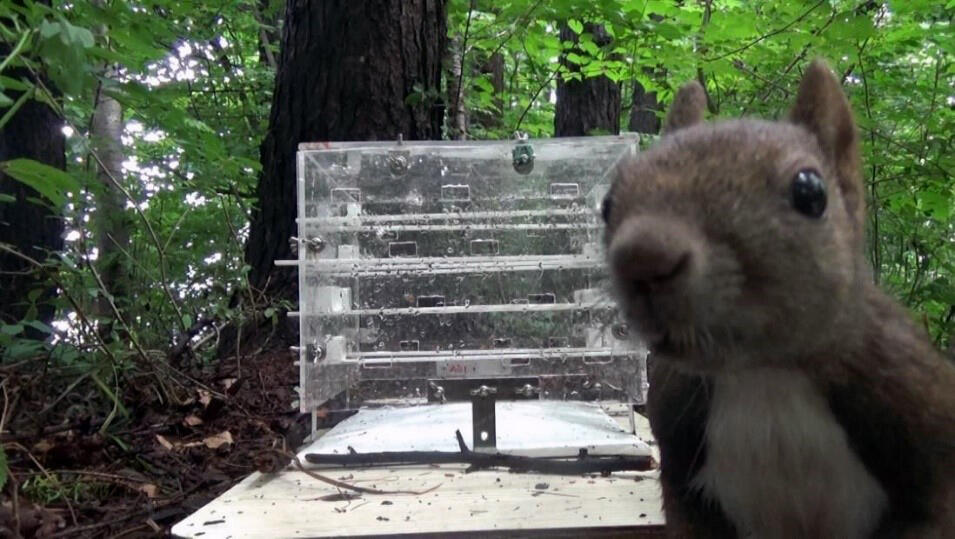A research group led by researchers Pizza Ka Yee Chow (currently at the Max Planck Institute) and Kenta Uchida, and Associate Professor Itsuro Koizumi, Faculty of Environmental Earth Science, Hokkaido University, have announced that its study of what forms of urban environments impact the novel problem-solving abilities of Eurasian red squirrels (Sciurus vulgaris orientis) has shown that the tame-looking squirrel may be actively avoiding opportunities to interact with people. The group made the discovery from observation of squirrels in several parks in Obihiro City, Hokkaido, where they set up puzzle boxes that rewarded correct answers with food. The findings are expected to lead to more harmonious co-existence between people and wild animals in urban environments. The results were published in Proceedings of the Royal Society B.

Cities and towns displace the natural environment in the region they are developed, so that people can live in them , and the expansion caused by population growth leads to a further reduction of wildlife. On the other hand, there are some animals believed to increase in number in urban areas such as crows, sparrows and mice. It has been found in previous studies that those animals that live in urban areas are more flexible and capable of overcoming new challenges than their counterparts living in their original habitat. This was thought to be the adaptive response to the urban environment, but it was not known how the environment affects novel problem-solving abilities.
Observations in the parks of Obihiro City
In this study, the research group looked at the ability to solve novel problems, which is an indicator of animals' cognitive ability, by setting puzzle boxes for Eurasian red squirrels living in the parks of Obihiro City, Hokkaido, to solve. Factors they counted in terms of urban environmental influences that impact this ability included the number of people visiting the park, the number of buildings around the park and the portion of the park covered with forest . The puzzle box contained a number of levers with food on them, and if a squirrel pushed a certain lever it would get the food. This design required the squirrels to demonstrate cognitive abilities like trial and error and thinking in order to obtain the food (solve the puzzle), because squirrels would expect to receive food by pulling on the lever.
Novel problem-solving ability
Eurasian red squirrels are small mammals that live in all parts of Hokkaido, they are 25 cm in length and weigh about 350 grams. They are widely distributed across Obihiro City, inhabiting not just forests but parks too.
In the experiment, puzzle boxes were set up and observed in 11 parks, with 71 squirrels identified. In terms of urban environmental factors, the group looked at the number of people visiting the park, the number of buildings around the park (degree of urbanization), the portion of the park covered with forest and the number of Eurasian red squirrels in the park, and evaluated their novel problem-solving ability.
Of 1349 attempts to solve the puzzle, they found 38 squirrels that successfully solved the novel problem twice or more. The more people were in a park, the lower the proportion of novel problem-solving squirrels there were. The proportion was also lower where a park was surrounded by more buildings, and in parks home to more squirrels. This showed that squirrels lost the ability to solve novel problems as human activity increased, suggesting that Eurasian red squirrels living in close proximity to people may be stressed by them. The study also found no correlation between the frequency of attempts to solve the puzzle and success rate, and large variations were seen among individual squirrels in their ability to solve the puzzle.
The key is getting the correct answer quickly
Upon detailed analysis of nine squirrels that were particularly good at solving the puzzle box, completing it over 40 times, the team found that the more people there were in the park, the faster they solved the puzzle. From this it can be considered that, while some squirrels would give up trying to solve the puzzle in parks with many people, others would reduce their interactions with people by solving the puzzle quickly, and it is likely this ability to flexibly adapt that enables the squirrels to live in the city. By establishing people-free zones for the squirrels, we may be able to reduce the stress they feel and improve their living conditions.
Seeking ways of living more harmoniously
Itsuro Koizumi states that, "We are currently working on an experiment with a different puzzle box structure so that we can study how squirrels' cognitive abilities change with urbanization, which is our next goal. In order to preserve biodiversity, it is vital that humans and animals can co-exist. I believe that we can find better ways to live alongside each other through understanding the characteristics of those species able to live alongside humans and how they perceive people."
This article has been translated by JST with permission from The Science News Ltd.(https://sci-news.co.jp/). Unauthorized reproduction of the article and photographs is prohibited.




